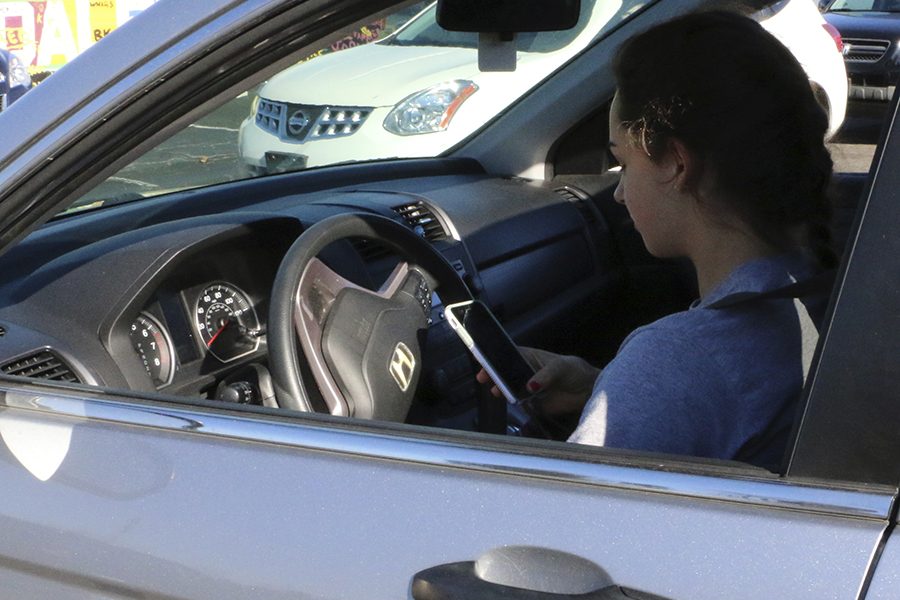Technology causes distraction for teen drivers
Teen driving fatalities have increased 10 percent since last year, according to USA Today. In the past five years teens have been in 14,000 fatal car accidents.
“The number one factor is distraction,” said Mr. Greg Bamrick, school counselor and driver education instructor. There are “too many dangers and obstacles as a driver so you have to be clear and focused,” he said.
Bamrick taught sophomore Henry Madden’s driver education class. “I learned how to be very safe on the road,” Madden said. Distractions can take more than one form. “Animals that run in front of the car are a distraction,” he said. Bamrick said during training his students could be distracted by multiple factors. “Sometimes it can be their own thoughts,” he said.
Passengers can also divert the driver’s attention from the road. The graduated driver license aims to prevent this issue with teen drivers by allowing for only one unrelated passenger during a driver’s first six months.
Bamrick is “all in favor of the graduated driver license,” he said, because “they’re vital in keeping young drivers safe.”
However, the dangers of driving with passengers continues beyond the first six months, and even one passenger can cause distraction. Sophomore Nandi Hawkins was in an accident caused by a driver arguing with his girlfriend. Hawkins’ mother, the driver, “was doing the right thing the entire time,” Hawkins said. “When you’re driving, you’re not the only one that’s affected,” she said.
“You could be doing a great job, but the person beside you or in front of you or behind you could be totally messing up and just cause an accident like that,” senior Caroline Lake said. Lake was in an accident on 56th Street when the driver in front of her “stopped on a dime” and Lake did not have the time to brake, she said.
Lake’s sister was also in an accident in which the car wrapped around a pole on the side of a road. “She was on her phone,” Lake said.
“I’m never on my cell phone in the car because that’s dangerous,” Madden said. According to the National Safety Council, cell phones cause 1.6 million crashes annually.
“Beginning drivers definitely need to keep their phones off and put away,” Bamrick said.
Junior James Cloud also recommends drivers turn off their cell phones before driving. “Only use your phone in emergencies,” he said. In the 11 months Cloud has driven, he has been in one accident. Cloud rear ended the car in front of him. “Never assume what people are going to do,” he said.
Cloud said drivers should not use their phones while driving, especially for trivial tasks such as checking Twitter. Any diversions from watching the road and the car’s surroundings can lead to a fatal accident.
“Always pay attention. Keep your eyes on the road,” Lake said.
Technology is a prevalent aspect of teenage life and is now a prominent feature in newer car models. “Technology has made driving safe, but all this new technology has created distractions,” Bamrick said. However, Bamrick said technology has done more good than bad.
Cars today are much safer “namely through technology,” Bamrick said.
Safety, though, is not dependent on purchasing the most recent car with the newest, safest features. Instead, drivers should focus on their own performance. “You’ve got direct control over two things as a driver, and that’s your speed and your following distance. If you control these you should be safe,” Bamrick said.
When driving, follow the rules and stay focused. Do not become distracted by cell phones, passengers or the surroundings.
“Your life is precious,” Bamrick said. “Live another day to love God and love people.”







